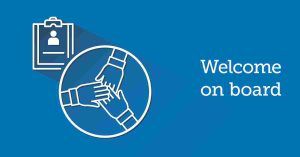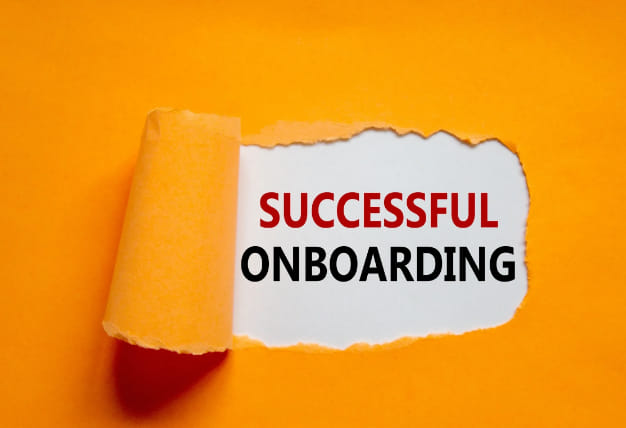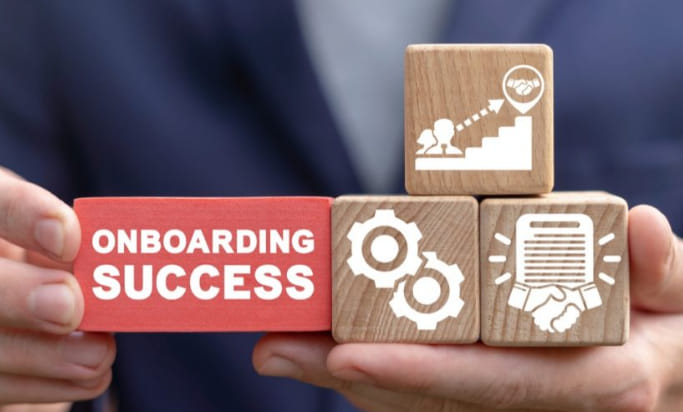Starting a new job can be an exciting but nerve-wracking experience for employees. As an employer, you want to make sure your new hires feel welcomed, informed, and prepared to be productive members of the team. A thoughtful onboarding process is essential for integrating new employees into your company culture seamlessly. In this comprehensive guide, I’ll walk you through the key elements of crafting an effective onboarding program. From pre-boarding steps to the first 90 days, you’ll learn actionable tips to successfully onboard your new recruits. Let’s get started!

Why Employee Onboarding Matters
Onboarding is the process of integrating new hires into your organization and equipping them with the tools, resources, and knowledge to become effective in their roles. It goes beyond simple orientation to facilitate connections, acclimate employees to the workplace culture, and align them with the company vision. The onboarding period typically spans the first 90 days of employment.
Well-designed onboarding delivers tremendous benefits:
- Higher new hire retention: Onboarded employees are over 50% more likely to stay at the company for more than 3 years.
- Faster ramp-up time: Effective onboarding reduces the time it takes for new hires to reach full productivity by over 30%.
- Improved employee engagement: Employees who go through sufficient onboarding report higher job satisfaction and engagement.
- Stronger performance: Good onboarding directly correlates with higher performance metrics and output quality.
- Brand ambassadorship: Onboarded employees become advocates who represent your employer brand better.
With the costs of recruiting and hiring being high, losing new recruits in the first 3 months can severely impact your bottom line. Investing in onboarding results in positive ROI by boosting retention, engagement, and productivity.
Pre-boarding: Setting the Foundation
Onboarding starts well before the employee’s first day at work. Pre-boarding is the process of preparing for the arrival of a new hire even before they set foot through the door. Here are some pre-boarding best practices:
Announce the New Hire
Inform your team about the new employee’s arrival. Share a little background on them, the role they will be taking on, and when they will be starting. Making introductions ahead of time gets everyone excited to welcome them.
Make Logistical Arrangements
Handle all the logistics to ensure a smooth first day – order technology and equipment, set up email, phone extension, computer access, and other work tools they will need. Have their workspace and ID badge ready. These small gestures go a long way in making new hires feel like you were expecting them.
Send a Welcome Package
Mail out a welcome package with a handwritten congratulatory note, company swag, information pamphlets, forms to complete, and request any pre-boarding tasks. This makes it tangible that they have joined your organization.
Digitize Onboarding Resources
Assemble onboarding resources, FAQs, org charts, training materials, and company documents into a centralized digital portal they can refer to. Ideally have it ready before their start date.
Assign Onboarding Buddies
Partner new hires with onboarding buddies – peer mentors who will guide them through the onboarding journey. Buddies help build connections and act as go-to people for questions.
Conduct Pre-boarding Meetings
Schedule 30 minute pre-boarding meetings between the new hire and their manager, mentor, HR buddy to discuss job expectations, training plan, cultural values and get them ready to dive in on day 1.
First Day Onboarding
The first day sets the tone for the employee’s entire journey at your organization. Go above and beyond to make them feel welcome. Here are some first day onboarding best practices:
Prepare an Engaging Schedule
Avoid information overload on day 1. Create a balanced schedule covering intro meetings with their team and leader, onboarding orientation, tour, program overview, administrative items, and time for the new hire to settle in.
Kick-off with Leadership Introductions
Start the day with introductions from leadership, summing up your culture and values. This frames the larger context of why the employee’s role matters. Follow it up with an informal chat over coffee to build rapport.
Orientation Presentation
Cover company history, vision, organizational structure, policies, workplace practices, and resources available via an engaging presentation. But keep it interactive with activities for the new hire to get involved.
Office Tour
Give a tour of the workplace, highlighting spaces they will interact with. Introduce them to team members along the way. The tour gives them their bearings of the new environment.
Onboarding Manual
Provide an onboarding manual or digital handbook outlining guidelines on company practices, acronyms used, contacts, and helpful resources. This will become their go-to reference document.
Set up Meetings and Greetings
Schedule lunches, coffees, and meetings for them to continue connecting with teams and leaders through the first week. These touchpoints reinforce the personal welcome.
Logistics and Equipment
Confirm all equipment, access, and tools are in place for them to dive into work. Set aside time for them to personalize their workspace.
First Day Gift
Cap off the first day with a personalized gift bag – company mug, notebook, snack treats. This makes new hires feel appreciated and part of the team.
First Week Onboarding
The first week should build on day one with structured activities focused on acclimating new hires, immersing them into the workplace culture, and equipping them with the basic knowledge needed for their role.
Set Up More Meetings
Continue networking events throughout the week for new hires to form connections with coworkers from different departments.
Assign Onboarding Activities
Develop engaging assignments such as scavenger hunts, trivia quizzes, and collaborative projects to introduce them to company services, facilities, practices in an interactive way.
Share Company History
Provide insights into your brand story and developmental milestones through photos, videos, presentations or even connecting them with long-term employees.
Review Job Expectations
Managers should walk new hires through their job description, key accountabilities, and metrics for success. Giving clear expectations prevents role ambiguity.
Introduce Tools and Systems
Provide hands-on training on any software, tools, machinery or systems needed for their day-to-day work. Having the fundamentals empowers them.
Monitor and Get Feedback
Check-in frequently with new employees on how they are adjusting and feeling. Be proactive about addressing any roadblocks. Solicit feedback on their onboarding experience so far.
First Month Onboarding

The subsequent weeks of the first month should focus on ramping up new hires through training, equipping them for their specific roles, and following up on their onboarding plan:
Schedule Job Shadowing
Set up on-the-job shadowing for new recruits with experienced teammates. Observing work flow first hand builds job knowledge.
Conduct Role-specific Training
Schedule technical skills training, simulations, workshops related to their role and domain. Well-trained employees become productive faster.
Assign a Buddy/Mentor
Ensure they are partnered with a helpful peer buddy or mentor to provide guidance and support beyond the first week.
Check Progress on Goals
Revisit initial onboarding goals and training plans. Provide coaching to close any gaps.
Align Expectations with Manager
The new hire and manager should have regular 1:1s to discuss progress, provide/solicit feedback, and align on objectives.
Introduce Performance Systems
Walk new employees through performance management protocols like goal setting, progress reviews, and professional development systems.
The Rest of the First 90 Days
The first 90 days mark the end of onboarding and transitioning the new hire to regular employee. But the journey continues with ongoing support:
Survey for Onboarding Feedback
Conduct pulse surveys and assessments to gather feedback on areas for improvement in your onboarding processes.
Celebrate Onboarding Graduation
Celebrate successful onboarding completion with small events or rituals like handing out congratulatory certificates.
Facilitate Ongoing Mentorship
Ensure new hires have access to mentors for guidance beyond the onboarding honeymoon phase.
Check-in on Progress
3 months in, managers should check-in on new hire integration, challenges, and celebrate wins. Feedbacks loops help address gaps.
Prepare Performance Reviews
With onboarding complete, the focus moves towards regular performance management processes like 90 day reviews.
Develop IDP with Manager
Collaborate on an individual development plan outlining long term career growth and capabilities development.
Onboarding has a long-term impact on employee retention, satisfaction, and success. Continued support ensures a smooth transition well after the onboarding period.
Best Practices For Onboarding Success

Beyond the structured activities, some best practices help facilitate an overall positive onboarding experience:
- Use the correct platform:
Confusing onboarding tools can make new hires feel overwhelmed. While they already feel anxious being in a new environment, making them navigate a complicated platform to go through a training session is only going to enhance that feeling.
Make sure the LMS you choose for onboarding is user-friendly and comes with an intuitive interface. Platforms like 360 learning are highly preferred in such situations as it facilitates effortless learning by ensuring the training content is quickly accessible through easy navigation aids.
- Get personal:
A lot of new hires feel all the over the place during their first week into a new job. This is because there is generic information being dumped on them with not much relevance. It prevents them from getting any solid idea about the company or their work.
It is important to personalize the onboarding process by interacting with the new hires to understand their background and address their specific questions. The process must make them feel included in the company culture, not like a needle in a haystack.
- Keep paperwork to a minimum:
One of the most important things that lead to the failure of an onboarding program is excessive paperwork in the starting days. Agreed it is important, but make sure the process is streamlined to be completed in as minimum time as possible.
If new hires are drowned in a sea of paperwork, it makes them feel disengaged. This can be disastrous as it ruins the company’s reputation. Be prepared in advance to help employees get done with all the paperwork in the shortest possible time frame.
- Segregate information in small sections:
Too much information can make new hires feel saturated and nervous. It’s better to start by welcoming them and addressing their most immediate needs. This assures them that they have the necessary information to navigate through.
Also, make sure you cover one topic at a time with the help of concerned teams so that new hires don’t feel overloaded. Depending on which team will be apt to deliver certain pieces of information, divide it into small sections so the information is easy to consume.
FAQs About Onboarding
What is onboarding?
Onboarding is the process of integrating new hires into a company and equipping them with the tools, resources, and knowledge to become effective contributors. It spans their transition from new recruit to fully productive employee.
How long should onboarding last?
Typical onboarding programs last around 3 months. The initial week focuses on company immersion, the first month on role-specific training, and the rest of the period on ramping up productivity.
What are some onboarding best practices?
Key best practices include pre-boarding preparation, structured first day orientations, assigning peer buddies, scheduled training and job shadowing, tailored programs based on personas, leadership involvement and regular onboarding feedback surveys.
How do you evaluate onboarding effectiveness?
Metrics like new hire ramp up time, productivity, engagement, culture fit and retention rates help assess how well your onboarding program is working. New hire feedback surveys also provide insights on areas of improvement.
How can technology help with onboarding?
Tools like onboarding portals with resources, e-learning modules, virtual simulations, and people analytics dashboards can help automate, engage, and provide insights to enhance onboarding.
Why is onboarding important for employee retention?
Effective onboarding correlates strongly with higher employee retention rates. New hires who feel integrated and set up for success through proper onboarding are much more likely to stick around long-term.
What are onboarding buddies?
Onboarding buddies are peer mentors assigned to guide new hires. Buddies help new employees learn the ropes, make connections and have a dedicated go-to person for asking questions.
How can managers support onboarding?
Managers play a pivotal role through involvement in onboarding planning, conducting initial alignment meetings, providing regular check-ins and being available to answer questions during the onboarding period.
Conclusion
Onboarding is a make-or-break opportunity for companies to engage and retain new talent. Yet many employers fail by just handing off stacks of paperwork on day one. For onboarding to bear fruit, approach it as a long-term immersion and support process. Invest time upfront on the foundations – pre-boarding, structured activities, training, mentors and continual feedback. The rewards will be productive, engaged employees who stick around and contribute for the long haul.
Through this guide, I hope you picked up some tips and best practices to enhance your onboarding initiatives. If you found this helpful, please share with teams who are looking to revamp their onboarding playbooks! Supporting new hires better improves organizations collectively.
Disclosure: The articles, guides and reviews on BlowSEO covering topics like SEO, digital marketing, technology, business, finance, streaming sites, travel and more are created by experienced professionals, marketers, developers and finance experts. Our goal is to provide helpful, in-depth, and well-researched content to our readers. You can learn more about our writers and the process we follow to create quality content by visiting our About Us and Content Creation Methodology pages.
